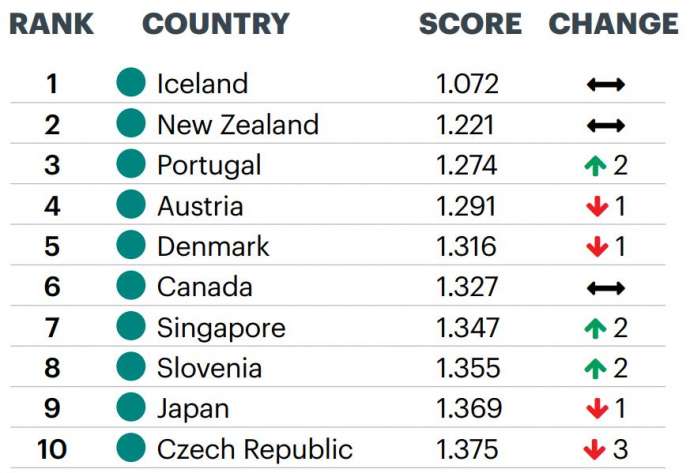STA, 16 June 2019 - Slovenia ranks eighth among 163 countries in the latest Global Peace Index (GPI), having climbed two spots from last year. Iceland remains the world's most peaceful country for the 12th year running.
This year's GPI report finds that the average level of global peacefulness improved slightly in what is the first improvement in five years. However, the world continues to be less peaceful than a decade ago.
Peacefulness improved in 86 countries, deteriorating in 76, with the average level of global peacefulness deteriorating by 3.78% in a decade, according to the report, released on the website of the organisation Vision of Humanity.
Iceland at the top is followed by New Zealand and Portugal, which climbed a spot to come ahead of Austria, which lost a spot to 4th. Denmark ranks 5th.
Slovenia placed after Singapore in 7th and Japan in 9th. Of the neighbouring countries only Austria ranks higher (4th), while Hungary, Croatia and Italy trail in 21st, 28th and 39th spots.
The index ranks three key factors: societal safety and security, ongoing conflicts and militarisation. Slovenia ranked third in militarisation.
Europe has maintained its position as the most peaceful region in the world, which it has held for every year of the GPI, which was first launched in 2007.
By contrast, the Middle East and North Africa (MENA) remains the least peaceful region for the fifth year in a row, although it did become more peaceful last year.
Afghanistan is now the least peaceful country, replacing Syria, which is now the second least peaceful. South Sudan, Yemen, and Iraq are the remaining five least peaceful countries.
Bhutan has recorded the largest improvement of any country in the top 20, rising 43 places in the last 12 years to 15th.
The report is produced by the Sydney-based Institute for Economics and Peace and developed in consultation with an international panel of peace experts from peace institutes and think tanks with data collected and collated by the Economist Intelligence Unit.
The GPI covers 99.7% of the global population, using 23 quality and quantity indicators.
The full report can be found here







